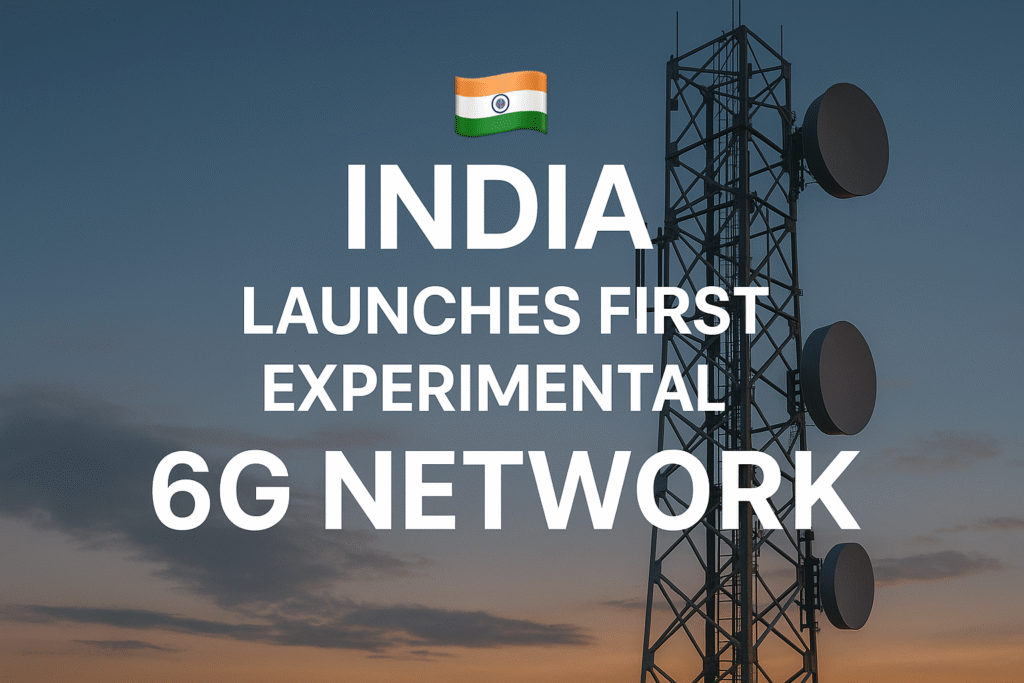
India has officially entered the global 6G race with the launch of its first experimental 6G network, marking a significant milestone in the nation’s telecom and technology advancement. This initiative, led by the Department of Telecommunications (DoT) and supported by key Indian institutes and startups, positions India as a potential frontrunner in shaping the future of ultra-fast, low-latency communications.
A Vision Set in Motion
The launch of the 6G testbed is a strategic move aligned with India’s Bharat 6G Vision, unveiled by Prime Minister Narendra Modi in early 2023. The goal? To roll out commercial 6G services by 2030, while becoming a major contributor to global 6G standards.
Unlike previous telecom generations where India played catch-up, the country is now aiming to lead innovation rather than adopt it late. With a focus on indigenous R&D, India’s test network is expected to fast-track the development of home-grown 6G applications, equipment, and services.
What Makes 6G Different?
6G isn’t just about faster downloads. It will:
- Offer terabit-level speeds (up to 100x faster than 5G)
- Enable real-time holographic communication
- Power AI-driven smart cities and autonomous systems
- Operate using terahertz (THz) spectrum
- Bring breakthroughs in quantum communications and edge computing
This next-gen connectivity will be crucial for industries like telemedicine, automated transport, AR/VR, and IoT ecosystems.
Key Players and Collaborations
India’s 6G experiment is a result of multi-sectoral collaboration between:
- IIT Madras, IISc Bengaluru, and IIT Delhi – conducting fundamental research
- C-DOT (Centre for Development of Telematics) – developing core 6G hardware
- Startups & private telcos – working on use-case simulations and software integration
India has also opened doors to global collaboration, particularly with countries like Finland, Japan, and the US to co-develop 6G standards and harmonize spectrum use.
Global Implications
While nations like China, the US, and South Korea are also racing toward 6G, India’s entry into the test phase solidifies its geopolitical tech standing. If successful, India could become a net exporter of 6G technology, significantly impacting its digital economy and global influence.
Challenges Ahead
Despite the excitement, several hurdles remain:
- Spectrum allocation in higher frequency bands
- Scaling up indigenous semiconductor manufacturing
- Ensuring data privacy and network security
- Bridging the digital divide between rural and urban areas
India’s ability to overcome these will determine whether it becomes a 6G pioneer or just a participant.
Conclusion: A Historic First Step
The launch of India’s first experimental 6G network is not just a technological breakthrough — it’s a bold statement of intent. As the world eyes the future of connectivity, India is carving its own path with ambition, innovation, and strategic foresight. Whether you’re a tech enthusiast, developer, or investor, this is a space to watch closely.





